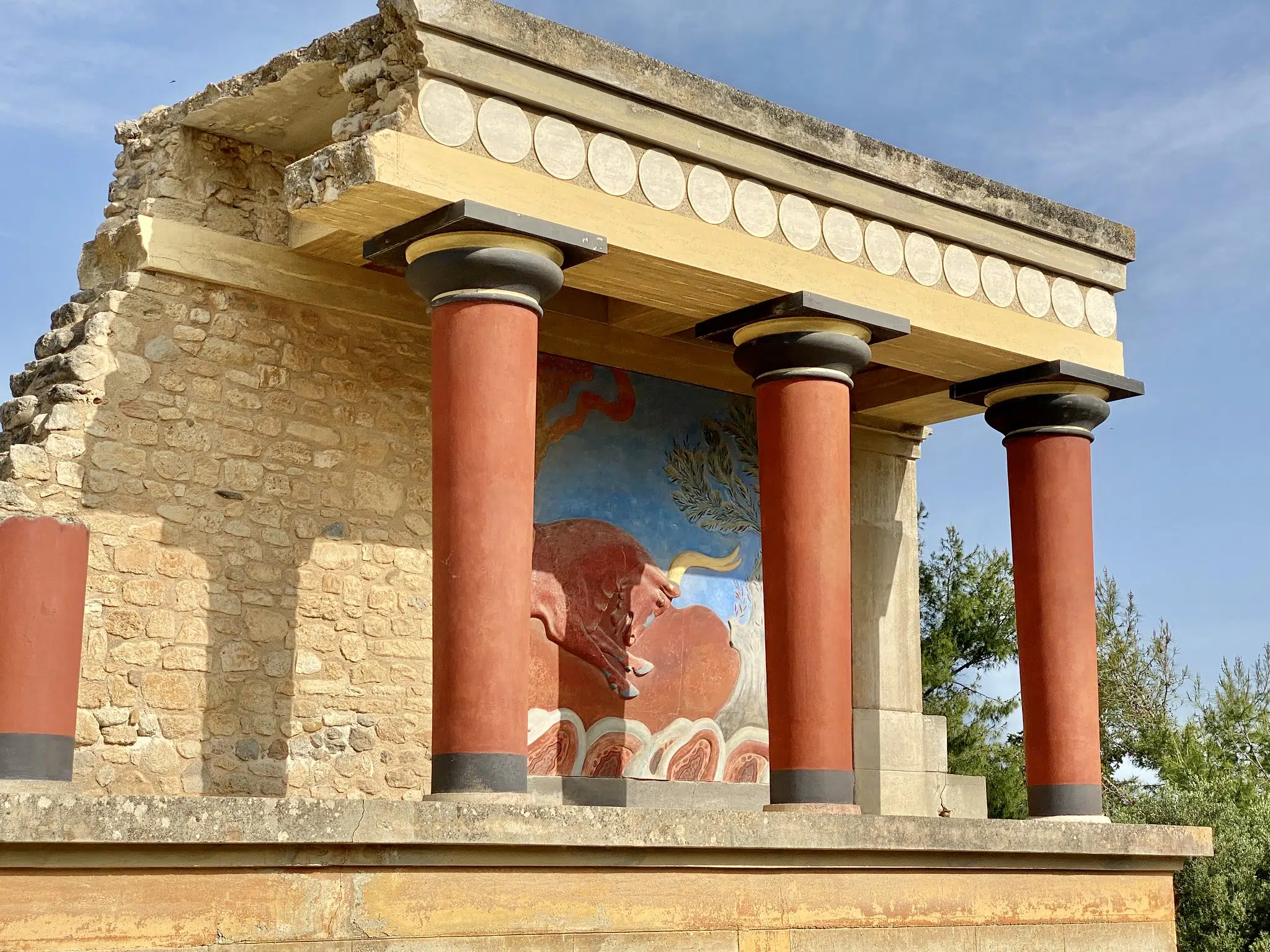
For hundreds of years historians and archaeologists have been trying to find answers as to how the great Minoan civilization of Crete came to an end, but no definitive answer has ever been found.
A Bronze Age culture centered on the island of Crete, what the ancient Minoans built is often regarded as the first true civilization of Europe, with a clear appreciation for art and architecture, all of which was rediscovered in the early 20th century through archaeological excavation.
The Minoan civilization evolved from the local Neolithic culture in around 3,100 BC, with sophisticated urban settlements beginning to be built in around 2,000 BC. After 1,450 BC, the Minoans fell under the cultural and possible political dominion of the mainland Mycenaean Greeks, forming a hybrid culture which lasted until around 1,100 BC.
The Minoans built impressive buildings which were initially labeled ‘Minoan palaces’ by original excavators, and later research showed that they were used for a plethora of religious and economic purposes rather than acting as royal residences – though their precise role in Minoan society is still under debate.
Their palace at Knossos was vast and elaborate, with Europe’s first paved roads and running water. The ancient Greeks wove its magnificence into their myths; it was the home of King Minos and his man-eating bull, the Minotaur, which roamed the palace labyrinth.
The term ‘Minoan’ was coined by Sir Arthur Evans, a British archaeologist and explorer who, along with Greek archaeologist Minos Kalokairinos, excavated the palace of Knossos and the surrounding area and recognized it as culturally distinct from the mainland Mycenaean culture.
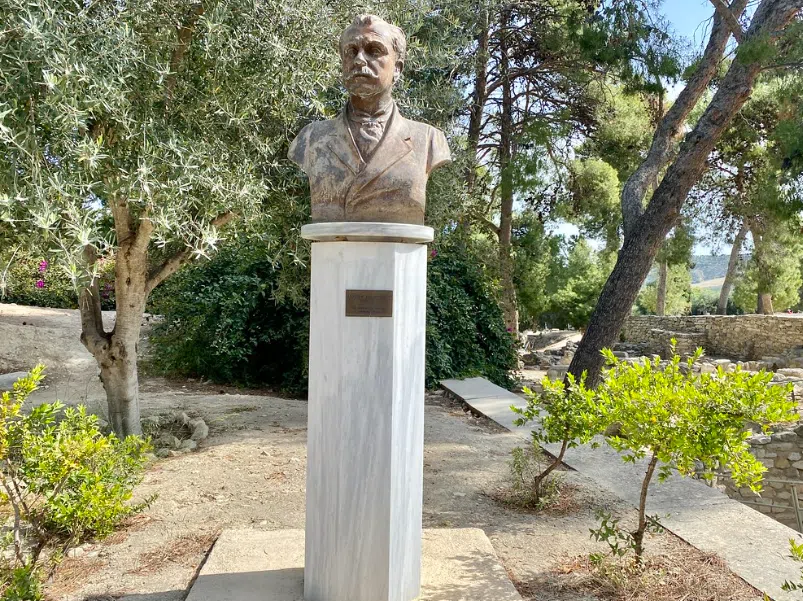
Following this, further excavations uncovered the Palace of Phaistos and the nearby settlement of Hagia Triada, and a further breakthrough in understanding the Minoan civilization came in 1952, when Michael Ventris deciphered Linear B – a late Minoan script first found on clay tablets and sealings in the second palace at Knossos – unlocking a vital source of information on the economic and social organization in the final year of the palace. Minoan sites are still being excavated to this day, with recent discoveries including the necropolis at Armeni and the harbour town of Kommos.
What Was it Like to Live in Minoan Civilization?
The Minoans bred cattle, sheep, pigs and goats, and grew wheat, barley, vetch and chickpeas. They also cultivated grapes, figs and olives, grew poppies for seed and possibly opium. They also domesticated bees.
Vegetable, such as lettuce, celery, asparagus and carrots, grew in the wild on Crete, and pear, quince and olive trees were also native. Date palm trees and cats for hunting, were brought in from Egypt. The Minoans even adopted pomegranates from the Near East. It’s possible that they employed polyculture, with their varied and healthy diet bringing about a population increase.
Linear B tablets convey the importance of orchards (figs, olives and grapes) in processing crops for “secondary products.”
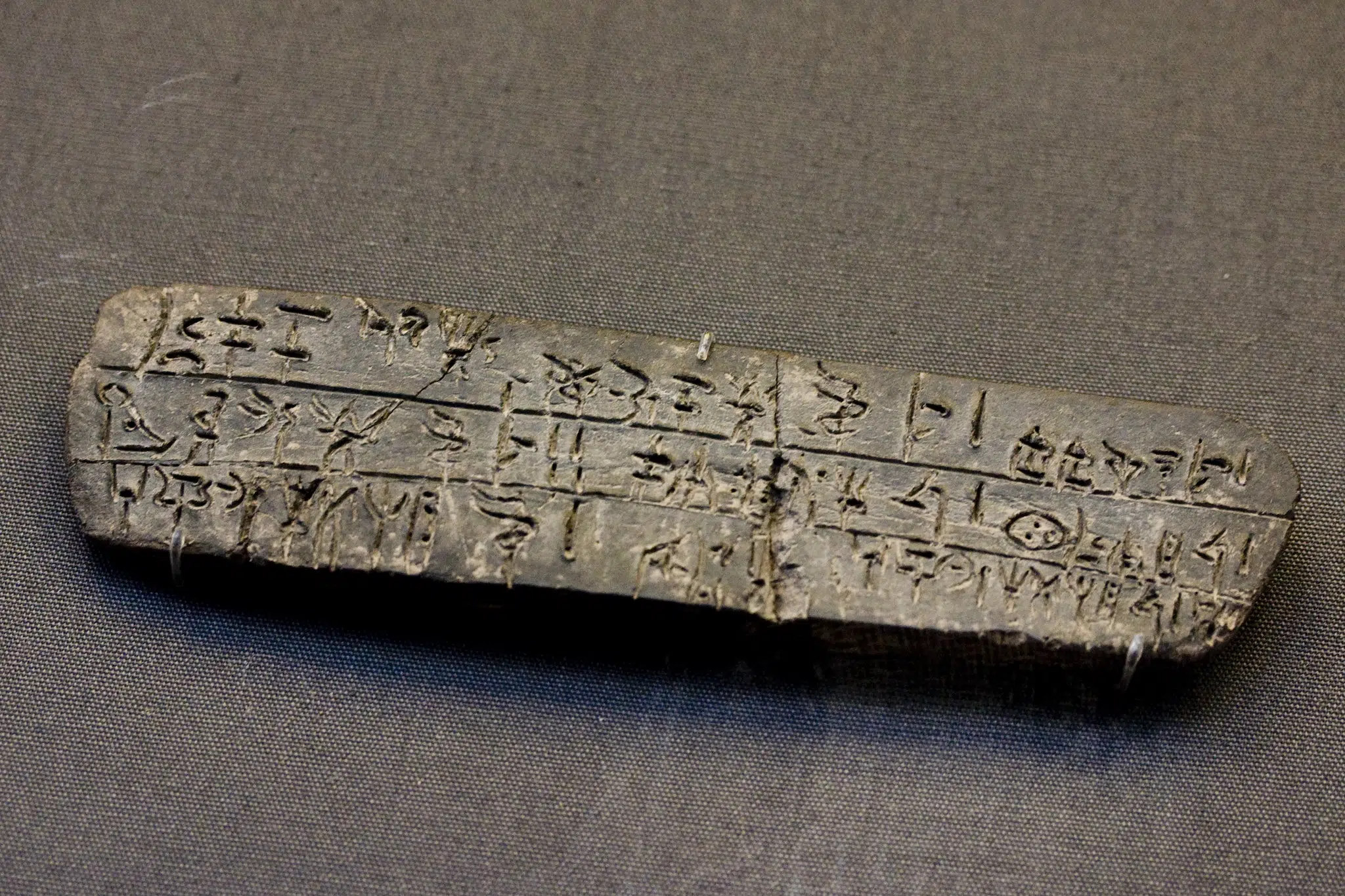
Aside from this complex agricultural and food-sourcing framework, the Minoans were also a mercantile people who were heavily involved in overseas trade, and at the civilization’s height, it may well have had a dominant position in international trade around large portions of the Mediterranean.
Minoan manufactured goods suggest a network of trade with mainland Greece, including Mycenae, Cyprus, Syria, Anatolia, Egypt, Mesopotamia and westward as far as the Iberian peninsula. Religion in Minoan civilization appears to have been centered on female deities, with women officiants.
Though historians and archaeologists are cautious about claims of an outright matriarchy, the predominance of female figures in power roles over males seems to indicate that Minoan society was matriarchal, and among the most well-supported examples known.
How did it all Come to an End?
Around three and a half thousand years ago, the tiny Aegean island of Thera was devastated by one of the worst natural disasters since the Ice Age – an enormous volcanic eruption.
This cataclysmic event took place around 100km from the island of Crete, the home of the thriving Minoan civilization. Just fifty years after the eruption, the civilization was in ruins. Whether the volcano wiped out the Minoans and is responsible for the fall of their civilization has been a question on historians’ minds for decades.
Early 20th-century archaeologists were aware of the devastating natural disaster, and most believed it probably wiped out the Minoan civilization instantly, but the truth might not be as straight forward as that.
To begin with, very little ash had fallen on Crete, with the prevailing winds having taken the volcano’s ash in the opposite direction. Then archaeologists discovered clay tablets which proved the Minoan civilization survived for around 50 years after the eruption. The question is, what accounted for this long gap?
Vulcanologist Ffloyd McCoy, from the University of Hawaii, is particularly passionate about the Thera volcano and whether it ended the Minoan civilization. According to the BBC, he journeyed around gathering evidence from other scientists around the world, trying to find out if there was a connection between the eruption of Thera and the end of the Minoans.
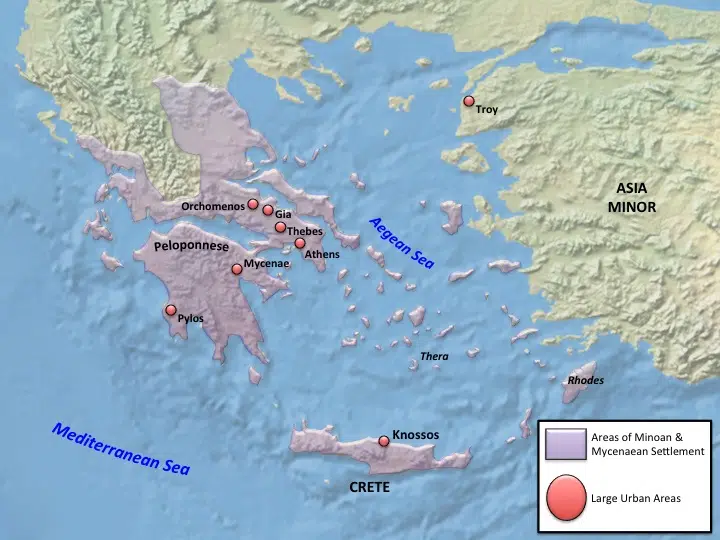
He began on the island of Thera, which was home to thousands and a prosperous trading post for the Minoans until the natural disaster hit. So huge was the volcano that it had great effect, preserving forever the town of Akrotiri.
Strangely, no skeletons have ever been found on the island. Akrotiri’s chief archaeologist, Christos Doumas, believes the people of Akrotiri did not survive, and that the bodies are still to be found.
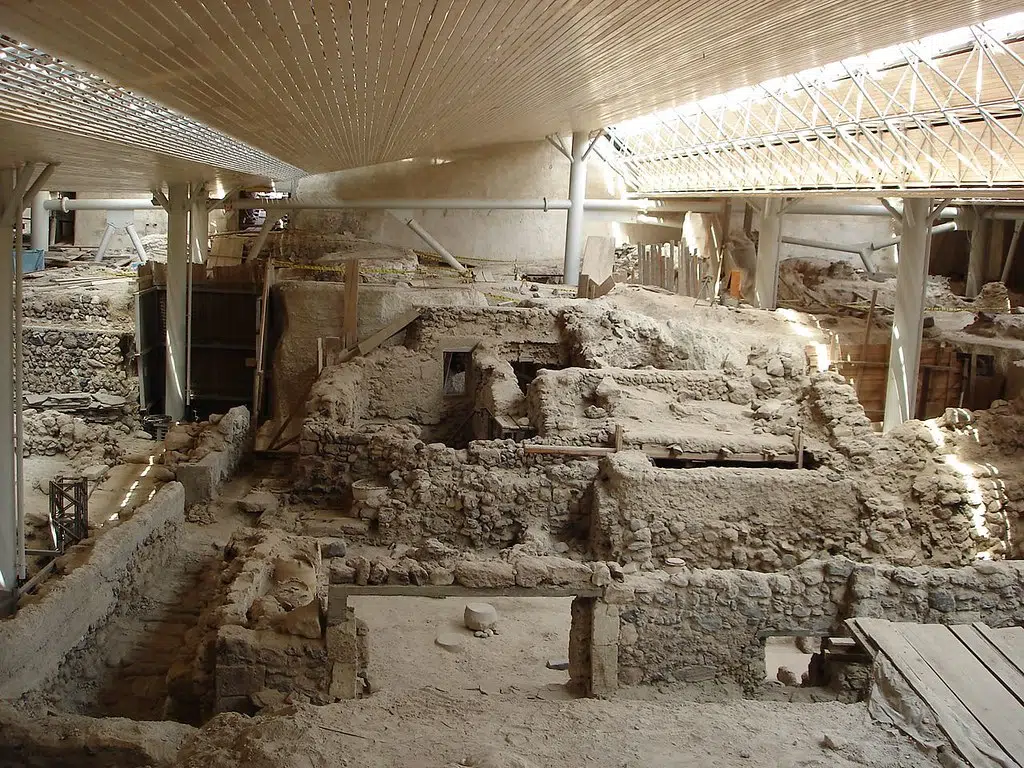
McCoy was apparently convinced that huge waves, or tsunamis, had been triggered by the volcano. He thinks these waves carried across the open sea to wreak havoc on the northern coast of Crete – but proof was difficult to find.
In 1997 a British geologist, Dr Dale Dominey-Howes of Kingston University, discovered what he thinks is strong evidence of tsunamis on Crete. He drilled deep into the mud at an inland marsh near Malia in Crete, and brought the mud core back to England with him for analysis.
The mud had been deposited, layer upon layer, over thousands of years. In one section, deep in the core, Dr Dominey-Howes uncovered a tiny fossilised shell which only lives in very deep sea water. He claims the shells were brought into the marsh by an ancient tsunami. A Minoan palace near the marsh was buried at the same level as the shells, which suggests the tsunami could have struck soon after the palace was built.
If there had been a tsunami unleashed by the volcanic eruption of Thera, McCoy was keen to understand how big it may have been. He went to Professor Costas Synolakis of the University of Southern California. Professor Synolakis grew up on Crete, and has become one of the world’s top tsunami-prediction experts, trotting around the globe with his computer models.
Professor Synolakis can also reportedly use his technology to determine the size of a wave from the ancient past. He estimated that waves from thera hitting northern Crete may have been as high as 12m in some places. These waves would have decimated boats and coastal villages, and even travel up rivers to flood farmland. But the waves were only part of the tale, and McCoy believed the volcano must have had wider effects.
An extraordinary discovery by a British geologist resulted in a new theory – that the volcano, which was already classed as one of the most destructive of the last 10,000 years, may have been even bigger than scientists had previously thought. Professor Steve Sparks of Bristol University came across clues in very small fragments of evidence. He was apparently surprised to discover clumps of fossilized algae high on the cliffs of the volcano. These algae only live in shallow waters, and their presence suggested there was once a shallow sea inside the crater of the volcano.
If there was indeed a shallow sea, Professor Sparks realised, the shape of the volcano may have been completely different, and a differently shaped volcano might have produced far more ash. His suspicion was that the volcano may have been twice as powerful as geologists had suspected.
McCoy thinks the volcano caused the Minoans trouble for years. Initially it destroyed an entire island which had been key for their trade, and then huge waves hit the Minoan coasts, devastating coastal villages and boats at the harbour. After that the Minoans faced summers of ruined harvests.
An archaeologist who has worked at Knossos, Colin MacDonald, thinks the effects of these disasters were compounded by something more – the Minoans had started to view their way of life differently. MacDonald claims the Minoan people, stripped of their certainties, ceased to obey the priest kings in palaces like Knossos. This, he claims, marked the beginning of a 50-year decline for the whole of Minoan civilization. They were not in a strong position to fight back when the Greeks from the mainland took control of the island.
See all the latest news from Greece and the world at Greekreporter.com. Contact our newsroom to report an update or send your story, photos and videos. Follow GR on Google News and subscribe here to our daily email!



